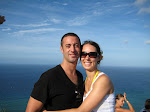Passed on through spoken language, the Celts do not have a specific creation myth; rather, they begin their history with the settling of Ireland. Ireland was invaded by five successive waves of people.
The first wave was the Partholonians. Partholon, his wife Dealgnaid, and their companions landed in the western province of Munster on Beltaine. Ireland was already inhabited by the Fomorians, thought to represent the ancient, evil Irish gods. The Fomorians were driven out to the north, where they returned periodically to plague the successive invaders. The Partholonians did a great deal to develop Ireland, building the first building as well as clearing four plains and forming seven lakes in addition to the one plain and three lakes Ireland possessed at the time. Unfortunately, all the Partholonians except one, Tuan mac Cairill, were killed in an outbreak of the plague.
The next wave was the Nemedians. They also landed in the west and fought the Fomorians, winning three battles with them. After these battles, they too were struck with the plague, and the Fomorians took advantage of the weakness of the Nemedians to demand heavy tribute. Eventually the Nemedians rose against the Fomorians and demanded freedom or battle; in the ensuing battle, they defeated the Fomorians. It is not clear whether they were all killed as well or whether they left the island, but after that battle the Nemedians no longer lived in Ireland.
Two hundred years after the Nemedians' battle, the Fir Bolg arrived in Ireland from Greece. The Fir Bolg divided Ireland into five provinces, Connacht, Ulster, Leinster, and two Munsters, and were the first Irish people to establish a kingship and administration of justice.
The Tuatha de Danaan arrived next, on Samhain, and fought a great battle against the Fomorians. The Fomorian king, Balor, was killed, and the Fomorians were driven out of Ireland for the last time.
The Milesians lived in Spain until one of their princes sighted Ireland from a watchtower. He sailed to find it and there met the three Tuatha de kings, who became afraid that he would try to invade Ireland and killed him. His companions returned to Spain with his body, and the Milesians set sail to exact revenge. When they arrived, the three Tuatha de kings requested that they be left in peace for three days. Amergin, poet and Druid of the Milesians, agreed, and the Milesians withdrew their ships for three days while the Tuatha de prepared for battle. After the battle, the Tuatha de were defeated, and Amergin was given the task of dividing the land, and he gave the Tuatha de Danaan the land below the ground and the Milesians the land above. After this, the Tuatha de lived below the hills, and it is they who were turned into the legendary faerie folk of Ireland.
The first wave was the Partholonians. Partholon, his wife Dealgnaid, and their companions landed in the western province of Munster on Beltaine. Ireland was already inhabited by the Fomorians, thought to represent the ancient, evil Irish gods. The Fomorians were driven out to the north, where they returned periodically to plague the successive invaders. The Partholonians did a great deal to develop Ireland, building the first building as well as clearing four plains and forming seven lakes in addition to the one plain and three lakes Ireland possessed at the time. Unfortunately, all the Partholonians except one, Tuan mac Cairill, were killed in an outbreak of the plague.
The next wave was the Nemedians. They also landed in the west and fought the Fomorians, winning three battles with them. After these battles, they too were struck with the plague, and the Fomorians took advantage of the weakness of the Nemedians to demand heavy tribute. Eventually the Nemedians rose against the Fomorians and demanded freedom or battle; in the ensuing battle, they defeated the Fomorians. It is not clear whether they were all killed as well or whether they left the island, but after that battle the Nemedians no longer lived in Ireland.
Two hundred years after the Nemedians' battle, the Fir Bolg arrived in Ireland from Greece. The Fir Bolg divided Ireland into five provinces, Connacht, Ulster, Leinster, and two Munsters, and were the first Irish people to establish a kingship and administration of justice.
The Tuatha de Danaan arrived next, on Samhain, and fought a great battle against the Fomorians. The Fomorian king, Balor, was killed, and the Fomorians were driven out of Ireland for the last time.
The Milesians lived in Spain until one of their princes sighted Ireland from a watchtower. He sailed to find it and there met the three Tuatha de kings, who became afraid that he would try to invade Ireland and killed him. His companions returned to Spain with his body, and the Milesians set sail to exact revenge. When they arrived, the three Tuatha de kings requested that they be left in peace for three days. Amergin, poet and Druid of the Milesians, agreed, and the Milesians withdrew their ships for three days while the Tuatha de prepared for battle. After the battle, the Tuatha de were defeated, and Amergin was given the task of dividing the land, and he gave the Tuatha de Danaan the land below the ground and the Milesians the land above. After this, the Tuatha de lived below the hills, and it is they who were turned into the legendary faerie folk of Ireland.
